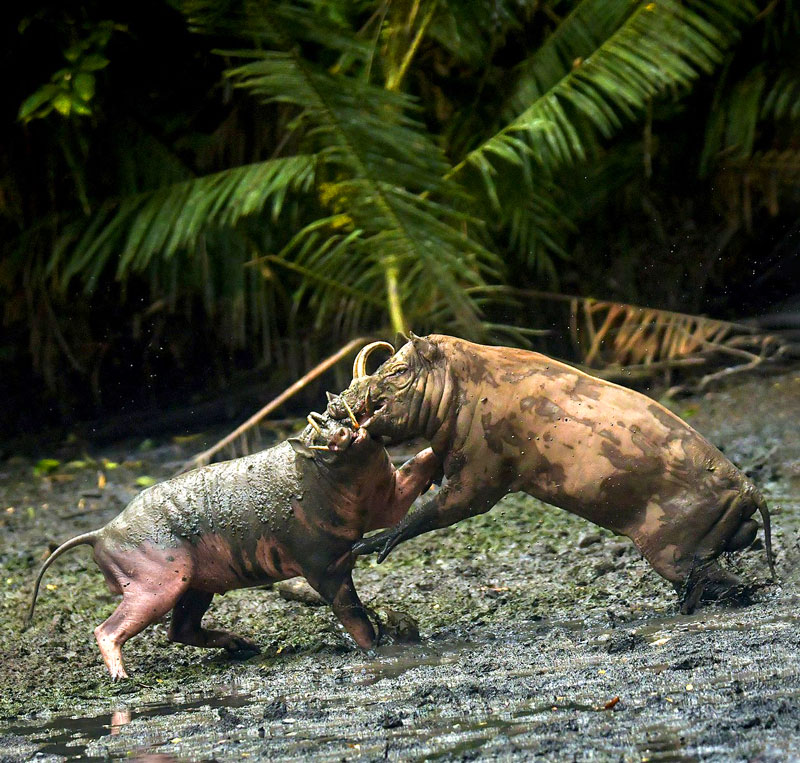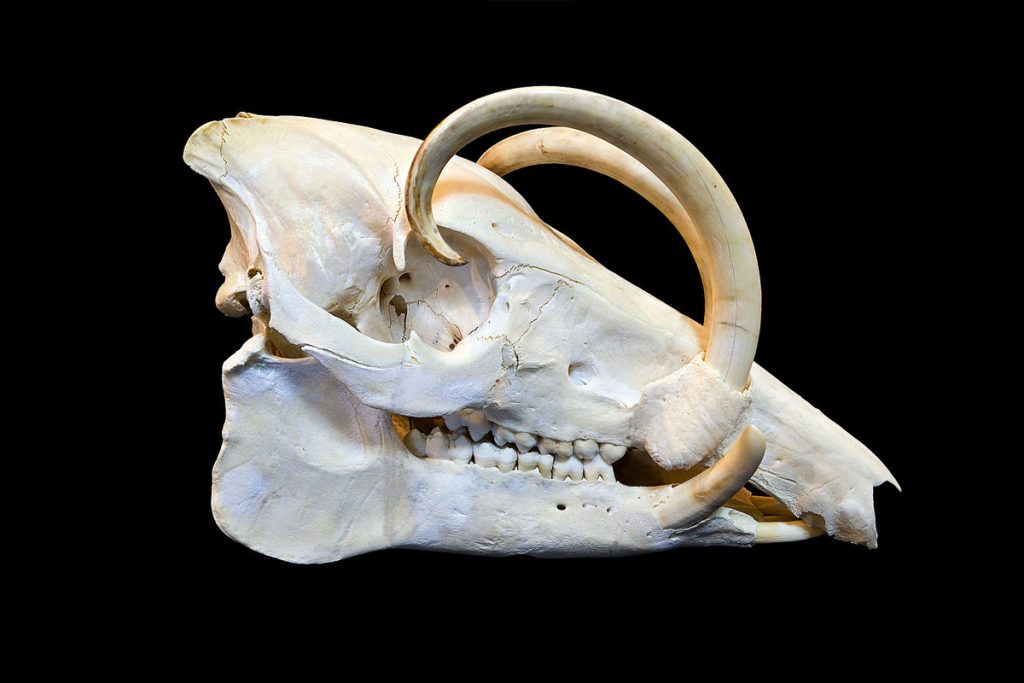Scientific Name
Babyrousa
Also referred to as: Deer-Pig
Description
Also known as “deer-pig”, the Babirusa is a pig-like creature in the swine family, although scientists have long believed that it could actually be related to the hippopotamus family. One of its most unique features is its hooked tusks which are basically overgrown canine teeth. The tusks function just like the antlers on deers, although they are a little bit brittle and therefore tend to break easily. It’s actually these antlers-like tusks that give the creature its name Babirusa, which also means “pig-deer”.
Just like pigs, Babirusas have a hairless skin/hide whose color ranges from brown to gray, with some light shades on its belly and undersides. Its brown or gray coloration allows it to blend in perfectly with the forest growth. It does have a few hairs though whose color ranges from white, gray, and yellowish.
The pig-deer has a roundish body that is more like torpedo-shaped and has legs that are quite long and thin. Its tail is around one foot long and is quite thin.
In male Babirusas, the long upper tusks/canine teeth stick out and curve backwards and upwards towards the head. The lower tusks/canine teeth stick out as well, but they do not grow as long as the upper tusks. The long upper tusks appear as though they will pierce through its head and thus kill it. They are often seen rubbing these tusks on trees to sharpen them. Female Babirusas or sows generally have smaller tusks than the males- making them easily distinguishable.
Food
The pig-deer is primarily an omnivore, which means its diet mainly consists of grass, leaves, and fruits. However, the animal is known to eat things like insects, small animals like birds and rodents, as well as fungi. On rare occasions, the Babirusa will feed on dead animal carcasses.
Habitat
The Babirusa is commonly found in tropical forests, canebrakes, as well as the shores of rivers and lakes in Indonesia. Poaching remains a huge threat to their existence. That’s why Indonesia has put strict measures to protect this endangered species and killing them is illegal.
Predators
The Babirusa does not have very many enemies. They are frequently hunted by wild dogs and humans pose the biggest threat due to poaching. People commonly hunt and kill them for their meat, thus greatly reducing their population. The Babirusa is now a protected species with only a few thousands left in the wild.

Social Structure
Little is known about the behavior of pig-deer as it is an extremely shy and reclusive animal. They mostly spend their day wallowing in mud which helps them eliminate parasites and insects on their hides. They are also excellent swimmers. During the night, the babirusa forages for food and will be found eating grass in the forest.
These animals typically live together in small groups which often consist of a number of adult females and their young ones. However, the groups can have at least 15 pig-deers. Once they reach maturity, the male Babirusas prefer to live in solitary.
Birth & Offspring
Unlike pigs which give birth to many piglets, the Babirusa only gives birth to 1-3 young ones. The mother nurses its young ones for six to eight months. Within 3 to 10 days, the young ones will start eating solids and begin foraging with the rest of the group. During mating, the male Babirusa engage in aggressive fights, usually standing on their hind legs and trying to break the competitor’s long tusks. The young ones often reach sexual maturity between 1-2 years.

Senses
The Babirusa’s sense of hearing and smell is quite excellent. They are known to communicate with moans or low grants and when excited, the Babirusa will clatter their teeth.

Lydia King is a huge animal lover and has always been fascinated with learning about the animal kingdom. She enjoys writing about anything animal related from scientific information about rare species to animal references in pop culture.












